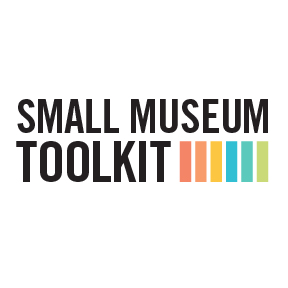Do you know what your audience thinks about your organization and what you have to offer? Do you offer a "product" that they value?
Develop your audience with
long-term relationships
in mind.
Exceeding expectations will
create good will and a positive
buzz about the museum.
|
Your audience will support you in the long run (with funding, attendance and word-of-mouth marketing) if they trust that you will meet their needs and wants.
Pursuing your mission only matters if you reach your audience (and so, of course, attendance matters). But, developing your audience is far more than simply increasing attendance. We quantify our relationships with our audience by counting visitors and web hits. However, when we become so focused on growing our numbers, we can lose sight of the quality of our interactions and our long-term relationship.
Let's take a more qualitative look at how your museum interacts with your audience:
- Which of your programs have been the most interesting, engaging and well-attended? Why?
- What aspects of your collection are unique, bear witness to compelling stories, or just have that "wow" factor?
- Do visitors pour over particular exhibits? Why are they so intriguing?
- Is your building a showpiece of the community?
- Is your staff known for its great customer service or engaging public presentations?
Now build on those strengths to take your first step in developing your audience. Your next program, exhibit or publication needs to demonstrate that your museum can exceed your current audience's expectations. Encourage your core supporters to share their positive impressions, whether in traditional word-of-mouth settings (like over the back fence and at the rotary club) or in social media (ever heard the conventional wisdom that Facebook is like a cocktail party?). By working with them to share that the valuable things your museum offers, you build good will and re-establish the museum as a community asset and create a positive buzz.
If you have strong ties with your current audience, consider which new audience you are ready to serve. Learn about what that group wants and how they communicate. Enlist community advisers from your target audience or from those who work closely with your target audience. Then strategically pick a couple of projects at the intersection of their wants and your strengths. Avoid a one-off program or exhibit. To build a relationship with a new audience, offer multiple ways for them to engage with your museum.
Next week we will turn to building relationships with those who are closest to your organization: your staff, board and volunteers.
Stacy Klingler currently serves local history organizations as the Assistant Director of Local History Services at the Indiana Historical Society. She began her career in museums as the assistant director of two small museums, before becoming director of the Putnam County Museum in Greencastle, Ind. She was chair of the AASLH Small Museums Committee (2008-2012) and attended the Seminar for Historical Administration in 2006. While she lives in the history field, her passion is encouraging a love of learning in any environment.

